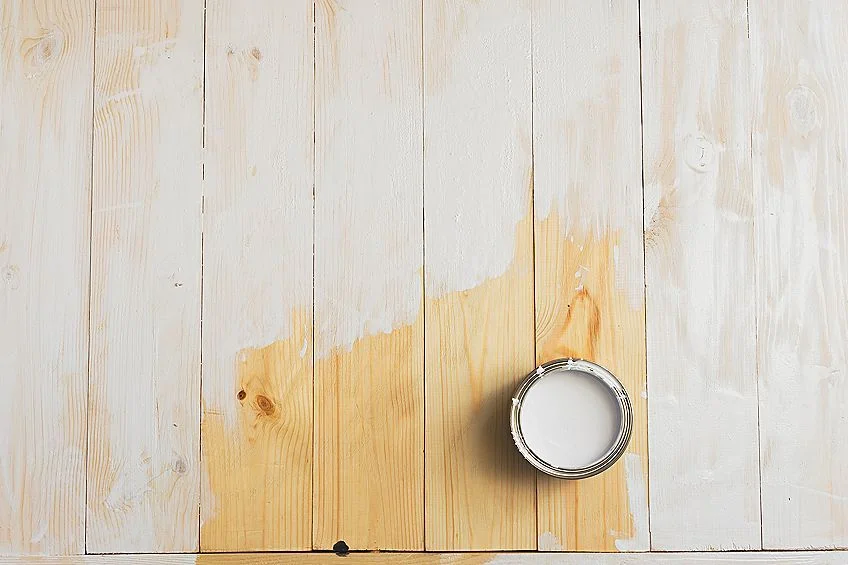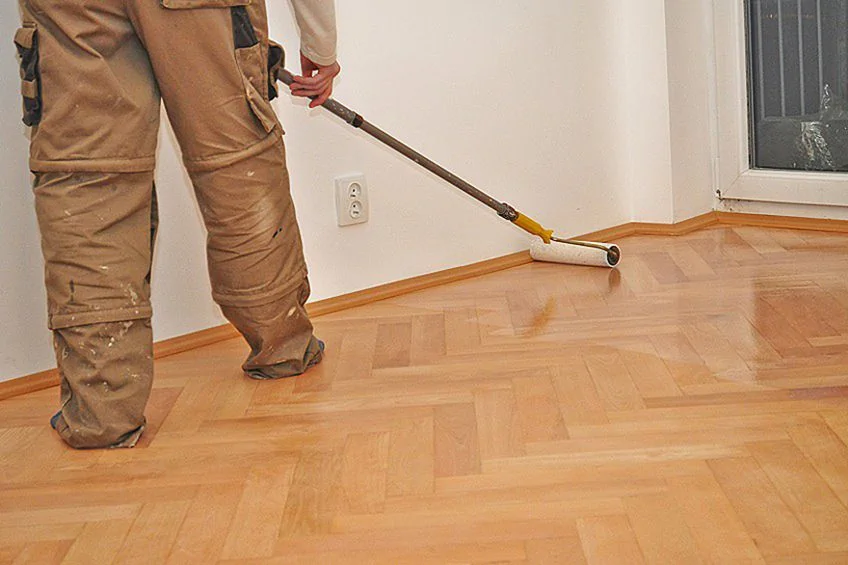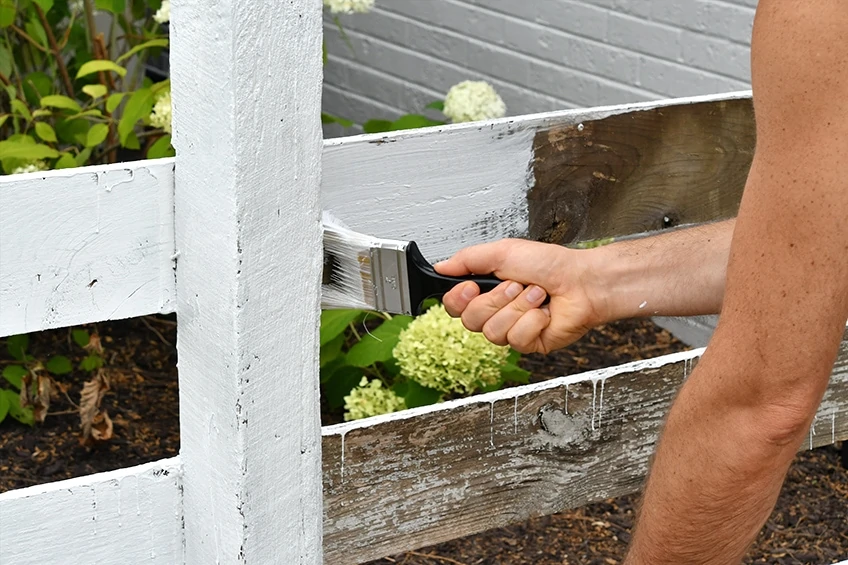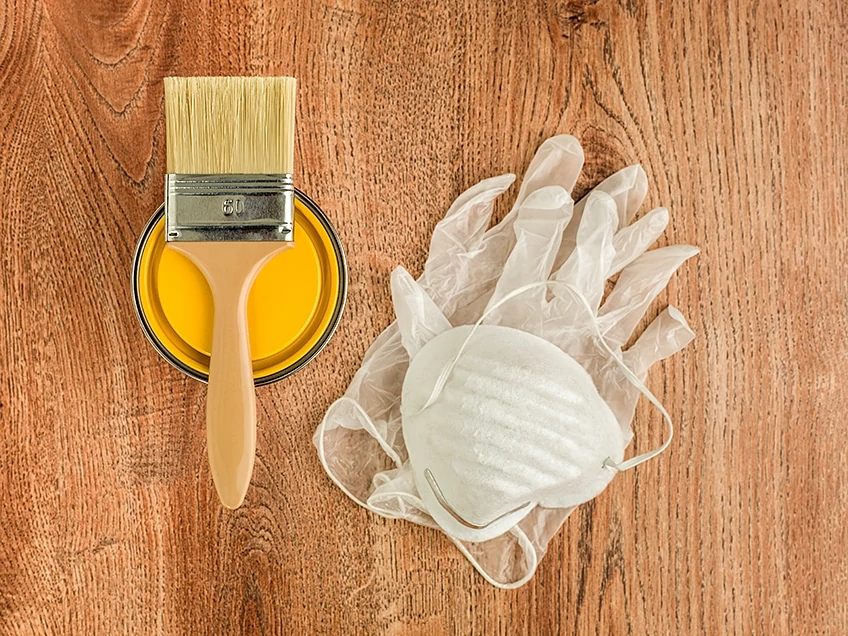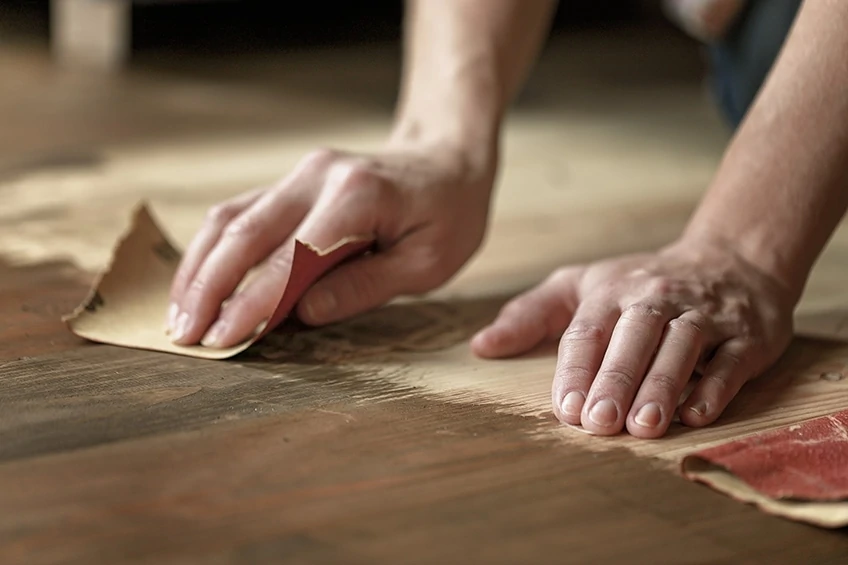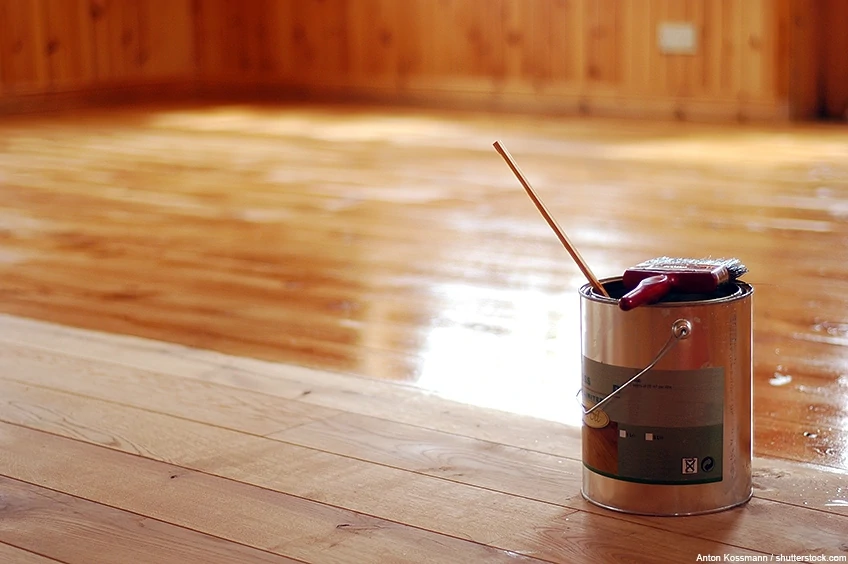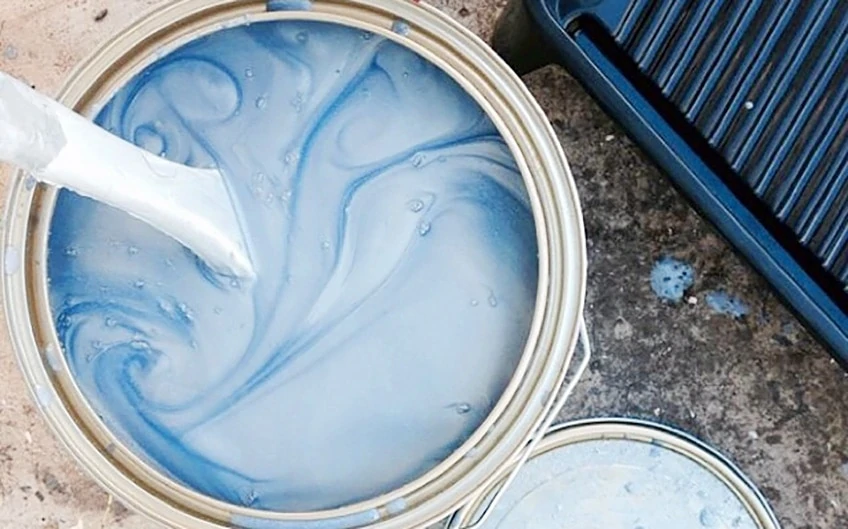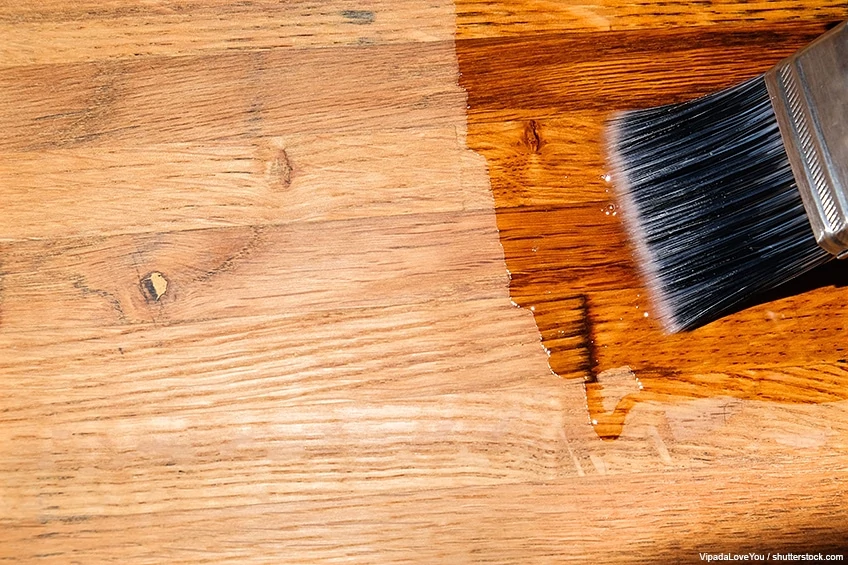Epoxy Paint for Wood – Your Complete Guide for Epoxy Coating for Wood
This post may contain affiliate links. We may earn a small commission from purchases made through them, at no additional cost to you. You help to support resin-expert.com
Epoxy paint is a 2-part coating, consisting of a catalyst and a resin. When combined, these two components harden into a durable coating, able to withstand a great amount of duress. Epoxy paint is not only ideal for concrete surfaces, but also for wooden surfaces, such as tables and wooden floors. Before the wood will accept the epoxy, a few important preparation steps are required. We tell you how to apply Epoxy paint and coating on wooden surfaces, such as floors.
Table of Contents
What Is Epoxy Paint?
Unlike traditional paint types, epoxy paint is specially formulated to provide superior protection against weather and chemical wear. Epoxy paint has a latex acrylic base and was originally designed for industrial use. As one of the toughest and most durable paint materials, epoxy paint is easy to maintain and suitable for both interior and exterior projects.
Epoxy paint can provide great weather protection for wooden surfaces, as it is water and heat-resistant. If you are looking for affordable and long-lasting paint protection, then epoxy paint is a great option. Here is a list of the pros and cons of epoxy paint for wood.
- Superior protection
- Easy maintenance
- Long-lasting
- Durable
- Water and heat-resistant
- Protects against chemicals
- Cost-effective
- Can be slippery
- Will need replacing eventually
- Application can be tricky and time-consuming
- Removal can be costly and labor-intensive
The Best Epoxy Paint for Wood
There are many different brands of epoxy paint for wood, the wide variety of which can seem overwhelming. You will need a top-quality epoxy paint for the best results, in addition to a primer that needs to be applied to the surface before the paint itself. We have picked the top choices for both an epoxy primer and paint to help you achieve the best outcome.
Our Top Epoxy Primer
Epoxy paint cannot adhere directly to a bare wooden floor. Thus, you will first need to prime your wooden surface with an acrylic latex primer before applying any paint. You will find primers available in darker and lighter shades.
It is best to choose one that will complement the color of your wood.
RUST-OLEUM Maximum Adhesion Primer
This water-based primer-sealer by Rust-Oleum offers a quality product that will maximize the adhesion between your wooden surface and epoxy paint. In fact, this product will allow for wet adhesion in warmer environments. The Rust-Oleum primer is easy to use and suitable for both interior and exterior projects. The primer dries quickly and is suitable for use on a range of surfaces with most topcoats.
- Water-based primer-sealer for interior and exterior use
- Use with any topcoat, including solvent based and epoxies
- Outstanding wet adhesion in moist or humid environments
Pros
- Easy to use
- Can be used indoors and outdoors
- Excellent adhesion in humid climates
- Fast-drying
- Works with most topcoats
Cons
- May not adhere to all surfaces
Our Top Epoxy Paint for Wood
Once you have combined the two individual components, you will have a short amount of time with which to work with your epoxy paint before it begins to harden. You need to ensure that you choose a brand of good quality so that you can be certain of a flawless finish on your wooden surface.
RUST-OLEUM Marine Topside Paint
This product is made with an oil-based formula and is great for use on sleek surfaces that are frequently exposed to moisture. This paint is self-leveling and will dry within a couple of hours with a durable, glossy finish. This product will endure most weather conditions and provides lasting protection from the sun’s harmful UV rays.
- Very flexible and applies easily with excellent leveling
- Dries to the touch in as little as 1 to 2 hours and covers up to 100 sq ft
- Durable coating resists abrasion and extreme weather conditions, UV-resistant
Pros
- Easy to apply
- Quick-drying
- Resistant to abrasions, UV rays, and extreme weather
- Smooth, glossy finish
Cons
- Coats have to be thin
- Expensive
How to Apply Epoxy Paint for Wood
The application of epoxy paint differs from other paint mediums. In the section below, we outline the steps that you need to take when applying epoxy paint for wood floors. Following these steps exactly will ensure that your application goes smoothly and your finish is clean and perfect.
Step 1: Sand Your Wooden Surface
Many wood floors tend to be coated with a varnish or sealer that is not conducive to epoxy paint adhesion. These coatings will often prevent the epoxy paint from sticking to the wood properly, so they need to be removed by sanding before you add the epoxy primer and paint. You can sand your wooden floors by hand or with a power sander. After sanding, you need to make sure that the wooden surface is clean. You can vacuum up any dust to avoid bubbles, blisters, and damage to the quality of your coating. You can then use a damp cloth to make sure that there is nothing left.
For superior clear coatings, sanding with the grain will enhance the aesthetics of the finished part. Naturally oily woods such as teak should have the surface oiliness removed with acetone and paper towels.
The working environment can play a large part in the quality of the finished coating and a dry dust-free environment will obviously give better results.
Step 2: Priming Your Wooden Surface
Bare wood surfaces are ill-suited for paint adhesion. Before epoxy paint will adhere to a wood floor, it must be coated with an acrylic latex primer. The primer should be applied, using a roller affixed to a rolling pole.
The primed wooden floors must dry for at least three hours before they are ready for epoxy paint.
Primer typically comes in light or dark colors, so you need to choose a primer color that won’t interfere with your floor paint. In other words, if you have white epoxy, you should choose primer with a light color. If you have black epoxy, you should choose primer with a dark color.
Make sure you apply several coats of epoxy primer to the wood. Let each coat dry before you add the next one. Yes, this will make your project take longer. However, spending a little more time waiting for the primer to dry will give you more attractive results.
Step 3: Mix Your Epoxy Paint
Mixing your epoxy paint is another essential step. Epoxy paint will remain uncured until the two components are stirred together. The resin and catalyst should be stirred for at least five minutes before you begin applying it to your wooden surface. Inadequate stirring can cause the epoxy paint to be uneven and sticky when you apply it.
Step 4: Applying Your Epoxy Floor Paint for Wood
Epoxy paint should be applied using a roller affixed to a rolling pole. However, the roller should be equipped with a shed-resistant nap cover. Epoxy will begin to harden quickly, so the entire floor must be coated within one session, as the epoxy will not keep for longer than an hour or two. The process of paint application is the same for almost all surfaces, like the video below.
With some coarse grain timbers, the first coat may be quite rough and lift some wood fiber from the surface. If this happens then stop, allow the coating to cure, and then sand the surface until it is smooth ready for the next coating application.
Best Tips for Applying Epoxy Paint for Wood
The application of epoxy floor paint for wood can be a little tricky if it is your first time. To help you out, here is a list of our top tips and tricks to help you get perfect results each time.
- When applying epoxy to wood floors, always begin in one far corner, and work moving backward toward the exit point of the room. Otherwise, you may become trapped within wet epoxy paint.
- Prepare surfaces scrupulously – make sure your surface is dry, free of dust and other contaminants, and thoroughly abraded.
- Apply multiple thin coats using a foam roller and tip off the surface after each coat. You will typically need 2-4 coats, ideally applied once the previous coat becomes tacky.
- If you are coating a surface that will be used outdoors, it’s important to apply a UV-resistant clear coating over the epoxy. You will still need an additional UV-resistant coat to protect the epoxy from the eroding effects of sunlight.
Epoxy paint for wood is one of the most durable and long-lasting paint mediums. Although it can be a little tricky to use, epoxy paint will protect your wooden surfaces from heat, chemicals, and weather conditions. With our guided instructions, you have everything that you need to successfully apply epoxy paint for wood floors.
Frequently Asked Questions
Can You Put Epoxy Paint on Wood?
Epoxy floor coatings can theoretically be applied to any surface. If you want to refinish a wood floor with epoxy coating, it’s probably not in great condition—so, in practice, wood floors should not be epoxy coated. Chemical engineers and flooring experts design epoxy floor coatings to be used primarily with concrete.
Can You Use Epoxy Paint on Plywood?
The epoxy coating would be used on something that is plywood-based construction that may be veneered inside and out so it has the appearance of traditional joinery but is very much a monocoque structure.
Does Epoxy Make Wood Waterproof?
Epoxy can give wood a waterproof, resilient finish. In most cases, it is an ideal coating for wood projects that will be exposed to moisture or wear.
What Should I Use to Seal Wood Before Epoxy?
If your surface has an oil-based stain or oil-based paint, you must apply 2-3 coats of oil-based polyurethane before doing the seal coat. The epoxy seal coat will not stick to an oil-based stain or oil-based paint. The polyurethane will cover that and allow the epoxy to stick
What Is Epoxy Paint?
Epoxy paint has a latex acrylic base which makes it one of the most durable and long-lasting paint mediums. Originally designed for industrial use, epoxy paint is heat, chemical, and water-resistant.


